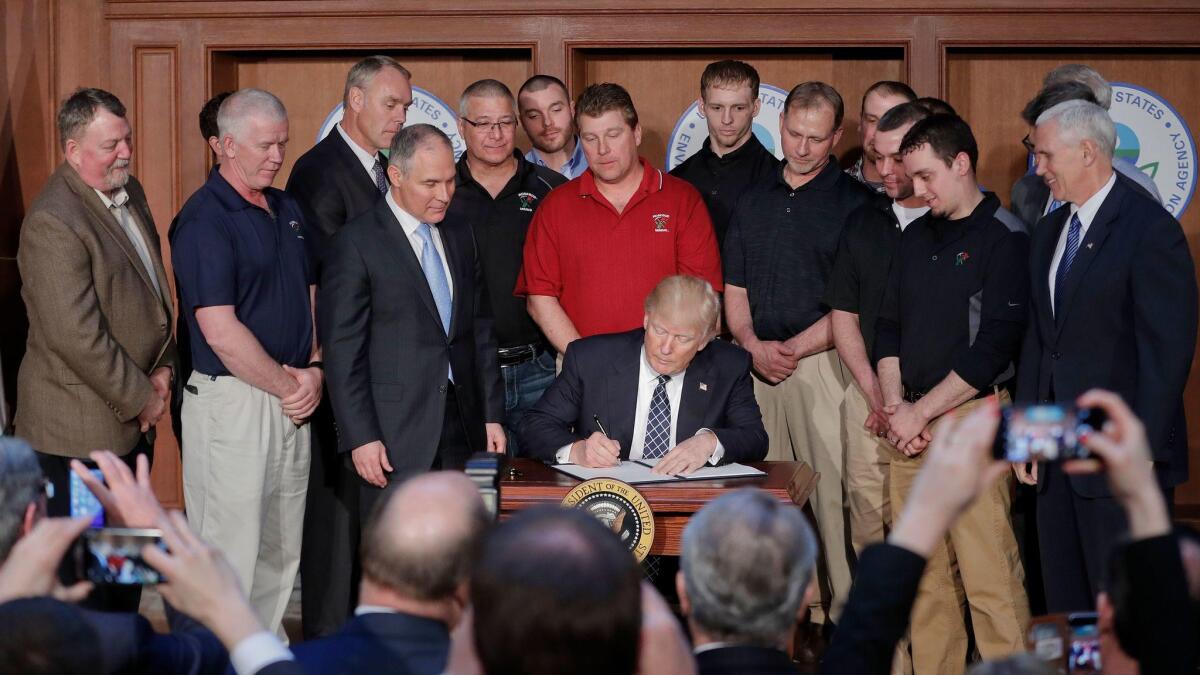A brief timeline of U.S. climate pledges made, and discarded

President Biden is announcing an ambitious new pledge to cut U.S. greenhouse gas emissions by at least 50% by 2030 as part of a global climate summit that begins today. Itâs a move intended to reestablish America as an international leader in the fight against global warming after four years of Trump administration environmental rollbacks and climate denial.
U.S. presidents have pledged to fight global warming for more than three decades, going back to when George H.W. Bush promised on the 1988 campaign trail that âthose who think we are powerless to do anything about the âgreenhouse effectâ are forgetting about the âWhite House effect.ââ
But Americaâs commitment to addressing climate change has seesawed depending on which political party is in power. Here are a few key moments:
1992: President George H.W. Bush signs the United Nations Framework Convention on Climate Change at the Earth Summit in Rio de Janeiro. The agreement provides the foundation for international efforts to reduce greenhouse gas emissions to âprevent dangerous anthropogenic interference with the climate system.â
1997: President Clinton agrees to cut greenhouse gases 7% below 1990 levels under the Kyoto Protocol, the first international treaty with legally binding obligations to limit emissions. The U.S. signed the agreement but was not bound by it because it was never ratified by the U.S. Senate.
2001: President George W. Bush announces the U.S. will not join the Kyoto Protocol, opposing it on the grounds that it exempted developing nations from mandatory emissions cuts.
2015: President Obama pledges to cut U.S. emissions 26% to 28% below 2005 levels by 2025 under the landmark Paris climate agreement. For the first time, nearly all countries committed to act to keep the global rise in temperatures âwell belowâ 2 degrees Celsius (3.6 degrees Fahrenheit) in order to avoid calamitous levels of climate change.
2017: President Trump announces the U.S. will quit the Paris agreement, in a sharp turn toward pro-fossil fuel policies and âAmerica Firstâ isolationism. The withdrawal does not officially take effect until near the end of his term.
2021: President Biden moves to rejoin the Paris agreement on his first day in office. This week his administration will announce a new pledge to cut emissions 50% to 52% by 2030, establishing one of the worldâs most ambitious climate targets.
A Biden administration official tried to portray the U.S. commitment to reducing emissions as stable despite Trumpâs decision to pull out of the Paris accord, which Biden has now rejoined.
âItâs important to keep in mind that over the last four years, our cities and our states, our business and our workers, they stayed in,â the official said. âWe kept marching toward the targets of the Paris agreement.â







